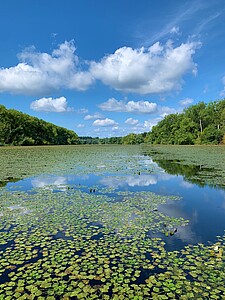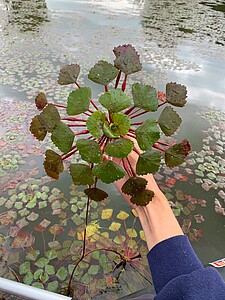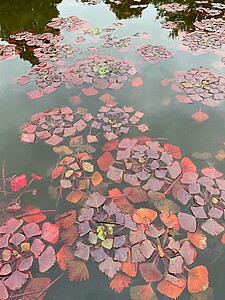The water caltrop (Trapa natans L.): a neglected, endangered macrophyte as a multi-purpose crop species under the constraint of its invasive potential
Natalie Palm
University of Hohenheim, Stuttgart
Institute of Landscape and Plant Ecology
Supervisor: Jun.-Prof. Dr. Andreas Schweiger and Dr. Jürgen Franzaring
Challenges
Trapa natans L. (water caltrop, Trapaceae) is an aquatic plant species, which was widely distributed in its native range (i.e. Europe, Asia and Africa). However, its distribution range is nowadays much smaller compared to that in the past, and, because of its population decline, it is to date even considered as one of the scarce species of conservation concern at some localities of its native range. Concurrently, the aquatic macrophyte has been introduced to North America and Australia, where it spread, naturalised and is nowadays declared to be invasive. Due to its adverse ecological, economic and social impacts, in its non-native range, the species is reported to be a significant nuisance. Nevertheless, T. natans has a lengthy history of utilization, commonly commercially cultivated for the large, dark, horned fruit and associated nut it produces as well as its divided submerged leaves and undivided floating leaves. Alongside having been grown for the use as a basic food and having for instance been exploited for the production of paper pulp, medicine, biofuel, compost and fertilizer, the species has been utilized in phytoremediation to absorb nutrients as well as heavy metals from sewage water and aquatic ecosystems.
Objective
The research project fulfils the purpose of unravelling to what extent the water caltrop as a neglected, endangered macrophyte offers a multi-purpose crop use under the constraint of its invasive potential.
Methods
An extensive literature study will be carried out to derive information on spatio-temporal occurrence dynamics of T. natans and its utilization as a multi-purpose crop. The obtained information will be combined with knowledge on environmental drivers as well as data on eco-physiological properties generated from greenhouse experiments and field work, to identify the factors that determine success and failure of the aquatic macrophyte.
Expected results
The present study is expected to provide a more profound understanding of past and prospective spatio-temporal occurrence dynamics of T. natans, the responsible environmental drivers as well as the underlying functional mechanisms. This will (a) allow for the development of strategies to support the remaining populations in their native habitats and also will (b) assist invasive species management in non-native environments, as it will enable the establishment of recommendations for measures that lead to more efficient prevention, control and eradication of non-native T. natans populations. The additional information derived on utilisation of the aquatic macrophyte as a multi-purpose crop may clarify whether there is unexploited potential for the cultivation of T. natans and may bring on more extensive use of the aquatic macrophyte in food production and phytoremediation.
Aim
The research project aims to understand the ambiguous nature of T. natans and will pave the way for combining the utilisation of it as a multi-purpose crop species with conservation efforts as well as combat measures against its invasiveness.
Peer reviewed publications:
1. Palm, N., Franzaring, J., Schweiger, A., 2024. International Biological Flora: Trapa natans. Journal of Ecology. DOI: 10.1111/1365-2745.14372.




